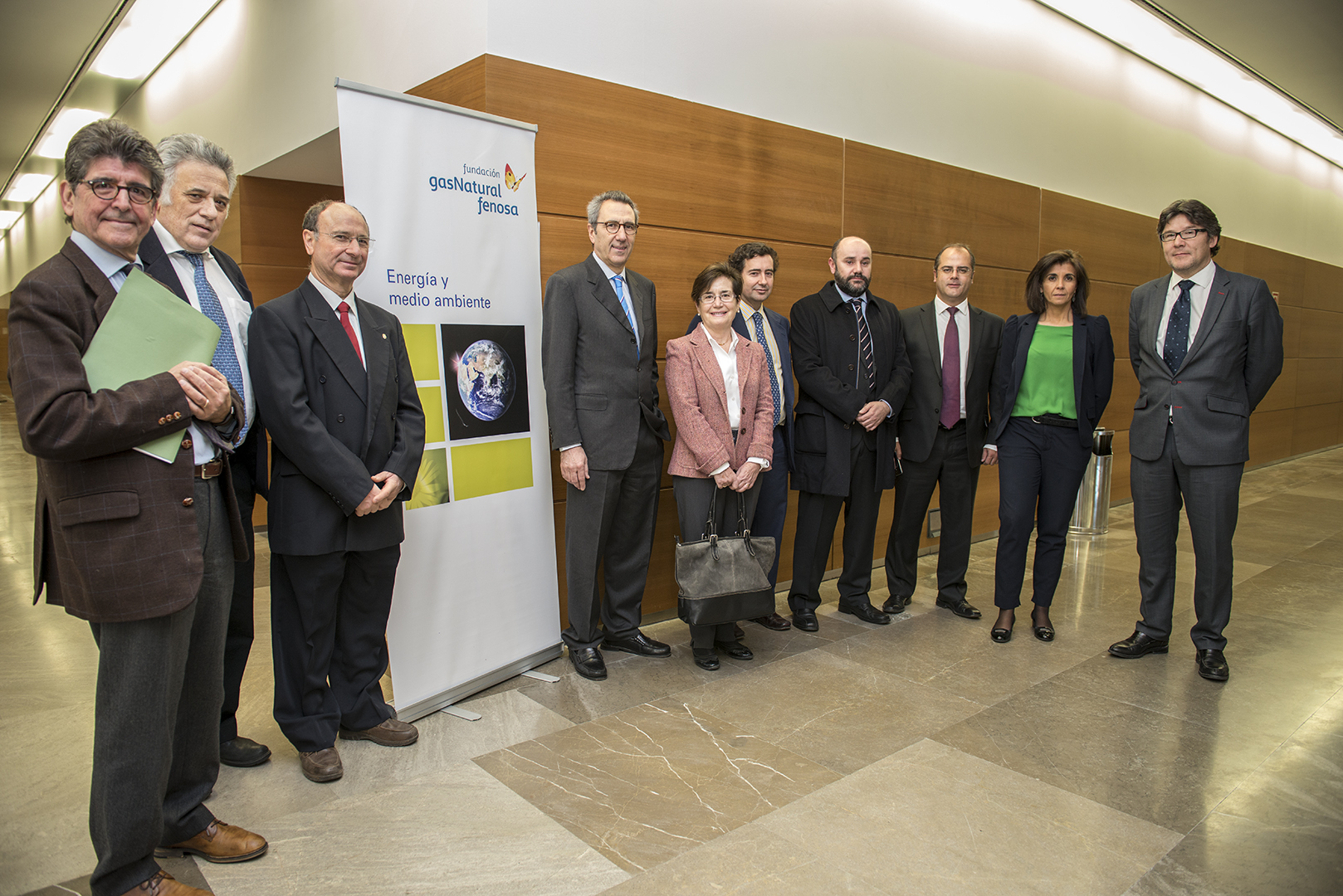Gas Natural Fenosa Foundation examines the growing inter-relationship between energy and water at a seminar in Toledo.
During a seminar organised in collaboration with the Regional Government of Castilla-La Mancha, a number of experts underlined the inter-connection between water and energy as a key factor for competitiveness in a sustainable future.
Through its foundation, GAS NATURAL FENOSA promotes information, training and increased public awareness on improving energy efficiency and technological innovation in the field of energy.

At the Toledo Conference Centre earlier today, the Managing Director of the Gas Natural Fenosa Foundation, Martí Solà officially opened an environmental management seminar entitled Energy and Water organised by the Gas Natural Fenosa Foundation in collaboration with the Regional Government of Castilla-La Mancha, at which various experts discussed the growing inter-relationship between energy and water.
The speakers at the seminar, which was attended by over 100 professionals, stressed that each element of this two-way relationship (energy and water) has a significant influence on the cycle of the other- both as a raw material (in the generation of hydro-power, for example) and a component in the electricity generation process (to cool thermal power plants), and in terms of the energy required to access underground water, the drinking water treatment process, distribution, treatment and consumption (especially in agriculture).
In the first part of the conference, Miquel Salgot- a professor from the School of Pharmacy at the Universitat de Barcelona- explained the importance of the water-energy partnership over the course of history and how water has gained an increasingly significant place in the energy cycle. He also explained the role played by energy in the water cycle, pointing out that hydro-electricity accounts for approximately one quarter of all electricity generated worldwide.
Energy efficiency in water treatment processes
The Chair of Environmental Technology at the Department of Chemical, Industrial and Environmental Engineering of the Polytechnic University of Madrid, Encarnación Rodríguez, examined the stages that comprise water treatment processes and explained a number of proposals for reducing energy consumption and environmentally harmful emissions. In this regard, she said that 5%- 25% of electricity consumption could be saved by improving current performance levels at treatments plants. At a global level, this would equate to the energy generation of 23 1,000MW power plants.
Innovation in irrigation techniques for the farming sector
The Director of the Regional Centre for Water Studies (Spanish acronym: CREA) of the University of Castilla-La Mancha, José María Tarjuelo, said that Spain has an irrigable surface area of 3.5 million hectares (Mha), which provides 65% of domestic food products and uses 80% of national water consumption (68% is reclaimed water). In turn, he explained that, to tackle the irrigation challenges in Spain, there is a need to increase the productivity of irrigation water through designer tools, analysis of how installations work and the implementation of consultancy services and decision-making support models.
Water management experiences in the energy sector
The Head of the Combined Cycle Plant Operation Support Department at GAS NATURAL FENOSA, David de la Fuente, discussed the management of water at combined cycle power plants and explained two projects aimed at reducing water consumption: Menos H2O, to improve water performance, reuse and recycling throughout the process; and CapWa, for obtaining water from exhaust gases before they enter the atmosphere through the chimney, thereby reducing the consumption of water to generate steam.
In turn, the Assistant Director of the Hydraulics Department of GAS NATURAL FENOSA, David Alejandro Pérez, explained that pumped storage hydroelectric power plants- such as the one in Bolarque (Guadalajara)- are currently the only effective storage system in existence and described their important role in the electrical system, due to their flexibility, large capacity for storage and adaptability to supply and demand. In this regard, the Head of Hydraulic Engineering at the power company, Javier Baztán, explained that respect for a constant flow capable of guaranteeing river eco-system conservation must be considered when designing a hydro-electric project. One of the solutions adopted in older concessions was to free up environmental flows by building mini power plants at the base of dams, thereby maintaining a sufficient and continuous flow throughout the whole year.
The Gas Natural Fenosa Foundation
The Gas Natural Fenosa Foundation, founded in 1992, targets its activity at the promotion of information, training and increased social awareness on improving energy efficiency and technological innovation in the field of energy while respecting and protecting the environment, and promotes cultural activities through the Gas Museum aimed at preserving and spreading knowledge about the historical and cultural heritage of the sector. Its international operations take place in Algeria, Argentina, Brazil, Colombia, Costa Rica, Mexico, Morocco, Italy and Moldova.
The company also implements an export support programme aimed at small- and medium-sized enterprises in Spain- the First Export Programme- that comprises a comprehensive package of free and ongoing training. The first training conference of this programme in Castilla-La Mancha will be held in Toledo in February. The Gas Natural Fenosa Foundation expects to train and advise over 50 SMEs in the region under this programme.
Toledo (Spain), 06 Feb 2015
Share